

The Vanda genus includes over 70 different orchid species, all native to tropical Asia. With truly splendid flowers similar to those of Phalaenopsis, Vanda orchids are equally suited to growing indoors in our temperate climates and are often available in stores.
Though they’re resilient and easy to care for, they don’t really like growing in pots. And triggering repeat blooming is rather difficult! Here are out tips on how to care for your Vanda orchids and lead them to bloom again.
Botanical name – Vanda
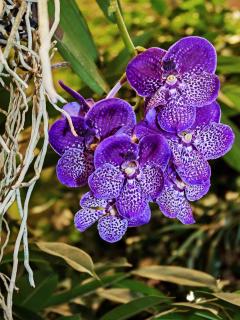
Family – Orchidaceae
Type – epiphyte
Origin – tropical Asia
Height – 8 inches to 6 feet (20 to 100 cm)
Bearing – monopodial
Blooming – several times a year (depends on the cultivar)
Flower color – pink, purple, orange, blue (depends on cultivar)
Exposure – lots of light
Hardiness – not hardy
Soil – very light, sphagnum
Propagation – keiki or stem division
Diseases and pests – rot, aphids, red mites, scale
Uses – hanging suspension, basket, vase
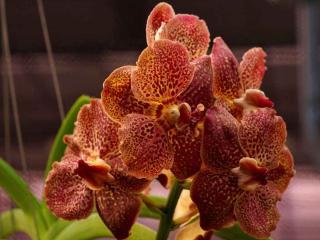
Vanda orchid flowers look a lot like those of Phalaenopsis, unfurling large wide flowers up to 6 inches across (15 cm). They’re very colorful. Depending on which cultivar you come across, colors vary greatly, ranging from delicate pink hues to orange and even blue! Their beauty is enhanced even further thanks to the ornate markings on their slender petals.
Find ways to avoid putting your Vanda orchids in a pot. Indeed, they only truly thrive when roots can roam wild and free.
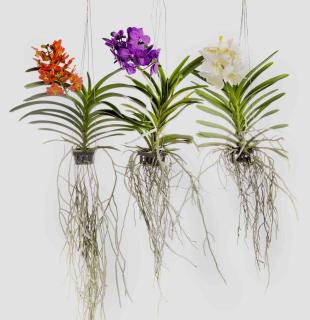 A great solution is to suspend the plant with wire (or in a coconut fiber basket) and let it spread, misting its roots often to keep them moist.
A great solution is to suspend the plant with wire (or in a coconut fiber basket) and let it spread, misting its roots often to keep them moist.The Vanda orchid thrives with temperatures in the 65-80°F range (18 to 26 °C). It can survive lower temperatures down to 50-55°F (10-13°C) but this completely blocks growth. On the upside, it does great during summer heat waves, easily withstanding heat into the hundreds (105°F or 40°C).
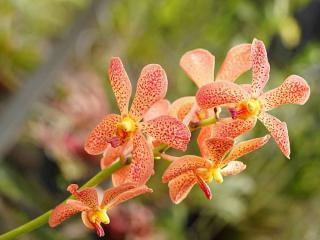
Most Vanda will require whole-day exposure to sunlight to survive and bloom. Be careful, though: it will suffer under direct sun during dry summers!
What generally triggers blooming in Vanda orchids is a bout of warm weather after a longer period of cooler temperatures. To recreate this cycle, move your orchid to a cooler room during winter, or simply open a nearby window in fall as temperatures start dropping.
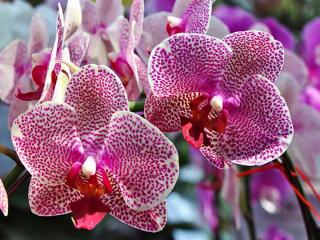
Read also:
During the growth phase, go ahead and add ‘special orchid fertilizer’ as you water your Vanda.